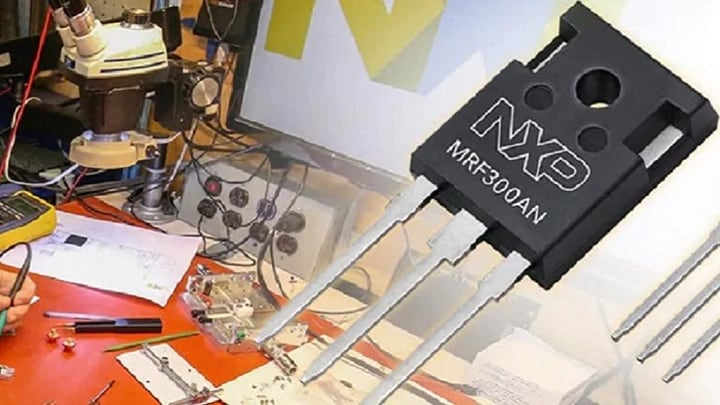Author

NXP
At NXP, innovation is always now, but our focus is always the future. Our dedicated team of experts is united by a passion to make everyday life more remarkable through technologies that continually redefine life as we know it.

Just as VDMOS replaced bipolar, it is now the turn of VDMOS to retire from mainstream applications. One popular property of VDMOS transistors is their virtual indestructibility. However the latest LDMOS devices, and specifically NXP’s ‘eXtremely Rugged’ 50 V XR family of RF power transistors, are at least as rugged and race ahead of VDMOS with other benefits.
 These benefits include low thermal resistance – die mounted directly
to flange – and the elimination of hazardous substances (such as the
VDMOS packaging’s beryllium oxide disc). And, significantly, LDMOS can
offer much more power in any given form factor than the older technology. For
example the BLF188XR delivers 1200 W, at least twice the power of the
equivalent BLF278 VDMOS device while sharing similar footprints.
These benefits include low thermal resistance – die mounted directly
to flange – and the elimination of hazardous substances (such as the
VDMOS packaging’s beryllium oxide disc). And, significantly, LDMOS can
offer much more power in any given form factor than the older technology. For
example the BLF188XR delivers 1200 W, at least twice the power of the
equivalent BLF278 VDMOS device while sharing similar footprints.
The space saving and cost effectiveness become clear if we consider a 12 kW system, which is handled easily by ten XR transistors compared to twenty or more traditional VDMOS devices. This enables a system to have a far more competitive form factor. Also, the state-of-the-art performance offered by LDMOS can be improved even further as the technology continues to evolve. By contrast, any new developments in VDMOS are severely limited due to the technology’s maturity.
 Many manufacturers have been quick to switch from VDMOS as they realize LDMOS
is the way forward. Along with all its benefits, it helps them create the next
generation of RF laser / plasma drivers and VHF broadcast systems that will
inevitably make older VDMOS systems largely redundant.
Many manufacturers have been quick to switch from VDMOS as they realize LDMOS
is the way forward. Along with all its benefits, it helps them create the next
generation of RF laser / plasma drivers and VHF broadcast systems that will
inevitably make older VDMOS systems largely redundant.
Of course as with any technology change a key factor in delaying the adoption of a new technology is the potential challenge presented by re-designing systems. To take full advantage of higher power and / or much smaller form factor offered by LDMOS, some system re-design is required. But it does enable systems to be both size- and cost-competitive, and meet today’s hunger for increased power performance. For instance, replacing the BLF278 with the BLF188XR increases power output to 1200 W – better by at least a factor of 2, and cutting form factor by a similar factor where several devices are used.
However a straight power-for-power LDMOS replacement incurs minimal system re-design. For example, replacing the BLF278 with the BLF184XR results in a 600 W power output with very little effort. But the system still benefits from the new technology’s extreme ruggedness, performance and lack of toxic substances. Also, the new system is more prepared for upgrading to higher power solutions in the future.
Soon, devices using LDMOS technology will be the de-facto standard in RF laser / plasma drivers and VHF broadcast systems. Will your next design allow VDMOS to bow out gracefully?
Tags: Industrial

At NXP, innovation is always now, but our focus is always the future. Our dedicated team of experts is united by a passion to make everyday life more remarkable through technologies that continually redefine life as we know it.

October 14, 2019

November 22, 2019
by Megan Faust

March 9, 2020